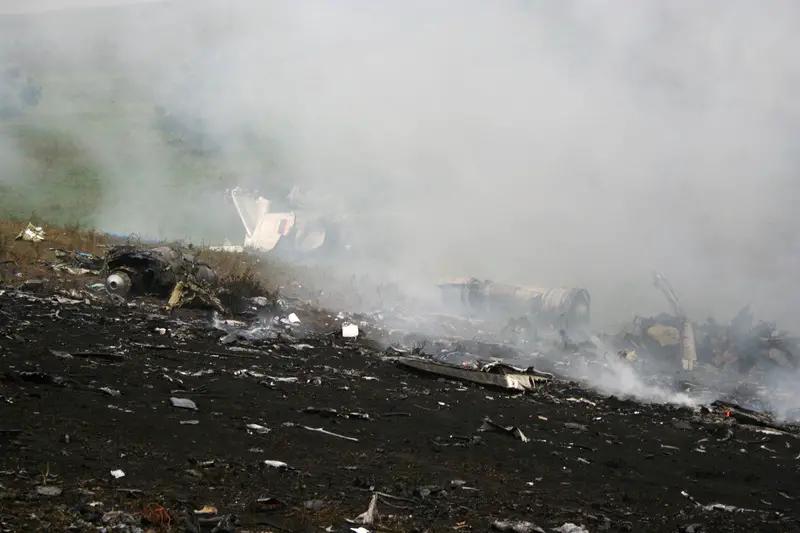A Soviet-era passenger aircraft operated by Angara Airlines crashed Thursday, July 24, 2025, in Russia’s remote Amur region, killing all 48 people aboard. The Antonov An-24 aircraft disappeared from radar around 1 p.m. local time while attempting to land at Tynda airport during its second approach.
The aircraft was flying a regional route from Khabarovsk to Blagoveshchensk and Tynda when contact was lost with air traffic controllers. Search and rescue helicopters located the burning wreckage on a mountain slope approximately 10 miles from Tynda airport, with no survivors visible from the air.
Regional Governor Vasily Orlov confirmed that 43 passengers, including five children, and six crew members were killed in the crash. Among the passengers was one Chinese national, according to Chinese state media. Orlov declared three days of mourning and ordered flags lowered to half-mast throughout the Amur region.
The aircraft caught fire after impact, with rescue helicopters discovering the fuselage engulfed in flames. Dense forest terrain complicated rescue efforts, requiring more than 100 search and rescue personnel to cut a path through the remote, roadless area to reach the crash site. The Far Eastern Transport Prosecutor’s Office stated that “the plane was attempting to land for the second time when it crashed, after failing to touch down on its first approach.”
The crew issued no distress calls before the crash, according to emergency services, and weather conditions at the airport were reported as suitable for flying. However, some reports indicated adverse weather conditions may have contributed to the incident. The aircraft was attempting its second landing approach when contact was lost with air traffic control.
Built in 1976, the nearly 50-year-old aircraft was manufactured during the Soviet era and had previously been operated by Soviet flag carrier Aeroflot before the 1991 collapse of the Soviet Union. The Antonov An-24 model was originally designed in 1957 and is known as a reliable workhorse in the Russian aviation industry, capable of operating in harsh Siberian conditions and landing on unpaved runways.
Russian investigators opened a criminal case into suspected violations of air traffic and transport rules resulting in multiple deaths through negligence. The Interstate Aviation Committee launched a probe into the crash, while the Russian government established a special commission including federal and regional officials to handle the aftermath. President Vladimir Putin was informed of the incident, according to the Kremlin.
Angara Airlines CEO Sergei Salamanov indicated that weather conditions were poor at the time of the incident but noted that the commander made the decision to proceed with the flight. The Siberia-based carrier operates 10 An-24 aircraft built between 1972 and 1976, according to aviation databases. The airline serves airports throughout Siberia and Russia’s Far East from its base in Irkutsk.
This marks Russia’s first fatal passenger aviation incident since July 2021, when an An-26 crashed near Petropavlovsk-Kamchatsky, killing all 28 people aboard. The crash highlights ongoing challenges facing Russia’s aviation sector, which has experienced increased mechanical failures since Western sanctions over the Ukraine conflict restricted access to spare parts and foreign aircraft components.
Russian airlines have struggled to replace aging Soviet-era aircraft with modern alternatives due to sanctions that have cut off access to Boeing and Airbus jets. In 2023, several regional airlines requested extensions for An-24 service life, citing difficulties replacing the aging fleet. Mass production of the new Ladoga aircraft, designed to replace the An-24 class, is not scheduled to begin until 2027 at the earliest.
The crashed aircraft had experienced at least two technical malfunctions since 2022, including a generator failure during flight in May 2022 and radio communication problems in March 2025 that forced a return to the parking area. The plane’s airworthiness certificate had been extended until 2036 in 2021, according to aviation databases.
Aviation safety challenges persist in Russia’s remote regions, where extreme weather conditions and difficult terrain make flying particularly hazardous. The An-24 aircraft, nicknamed “flying tractors” by some in the industry, remain essential for connecting isolated communities across Russia’s vast territory, particularly in areas lacking proper runway infrastructure.
A hotline was established for families of crash victims and others affected by the tragedy. Chinese President Xi Jinping sent condolences to Russian President Putin, expressing sympathy for the families of those killed in the crash.
Social media platforms saw the circulation of several unrelated images falsely claiming to show the crash site, including photos from previous aviation disasters dating back to 2010. The actual crash site remained largely inaccessible except by helicopter due to the remote, forested mountainous terrain.








